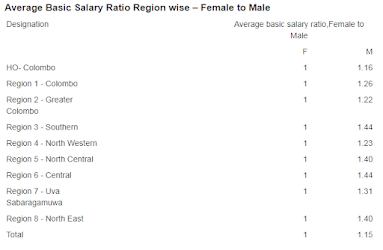Employee engagement makes workforce
actively engaged in work. It also uplifts employee morale and improves the
innovative capabilities of employees.
Keeping employees engaged is equally important to all industries. It is
because your employees’ engagement ensures that they work to the best of their
abilities. Employee engagement has become one of the most important priorities
for human resource managers in all businesses.
The
Importance of Employee Engagement in the Banking Industry
There are several reasons why employee
engagement is important in any industry and organization. But with a high rate
of attrition and disengaged employees, it becomes a necessity in the banking
sector. Let’s look at a few of the reasons why banks can benefit from having an
employee engagement strategy:
Teams can go from being good to exceptional
when employees are fully engaged.
Employees that are engaged are more likely
to stick with their current employer. They commit themselves to the development
and success of the company's bottom line while also becoming advocates for the
bank’s services.
They tend to perform better and are
self-motivated.
Profitability and employee engagement are
strongly correlated.
Engagement fosters an emotional bond
between employees and their employers, which raises customer satisfaction and
service standards.
Increases employees' trust and loyalty in the
cutthroat banking industry
It transforms your workplace into a vibrant
and exciting place to work.
An employee that is highly engaged will
consistently go above and beyond.
Employee Engagement in NDB Bank
NDB believe in fostering an open culture,
where employees are encouraged to put forward their suggestions on improving
the organization. Our open culture is reflected by the high level of engagement
we maintain with employees, facilitated by numerous formal and informal
mechanisms. These include, performance appraisals, multi-level staff meetings, cross
functional team engagement and a year-round calendar of sports and cultural
events. All employees are encouraged to engage with senior management through
regular Town Hall meetings and multi-level staff meetings. The CEO also
communicates with employees through email and shares important news,
achievements and strategic changes of the Bank. The Bank regularly conducts
Q&A sessions, where employees are given the opportunity to voice any
concerns regarding a process, policy or practice in place at the Bank.
Recreational events are organized by the NDB Staff Recreational Club
(NDBSRC) and include multi-religion celebrations, staff trips including
families, NDB kiddies party and the annual NDB dinner dance. The annual trip,
NDB annual dinner dance and the NDB kiddies’ party is open to family members of
employees. This year, the NDBSRC went an extra mile and organized an overseas
trip for the employees. Around 1800 – 2000 staff had the opportunity to select
one destination out of 3 countries (Singapore, Malaysia and Thailand) to spend
their weekend with their families. The annual dinner dance this year was
organized in a grand scale at the Shangri – La hotel, Colombo accommodating a
total of 700 employees and their spouses. During the year, the Human Resources
Department also organized logistics for the staff to view the Nawam Maha
Perahera of Gangaramaya Temple, within the comforts of the office premises.
To harness personal development which results in professional
excellence, the Bank inaugurated the NDB Toastmasters club in 2013 and joined
the Global Toastmasters fraternity. This has helped many to improve their oral
communication while giving them confidence to participate in professional
forums. The Bank shows recognition of employees for the special skills and
commitment displayed in non – job related areas. Thus, annually a recognition
programme is organized on a grand scale by the Human Resources Department to appreciate
and reward the commitment shown by the NDBSRC members, NDB Toastmasters, our
very own NDB “Skillart” music group and the talented photographers of the Bank.
In the same programme, employees who represented the Bank in the mercantile
arena and brought glory to the Bank through their achievements were also
recognized.
Anuradha. (2022, 04). researchgate.
Retrieved 04 26, 2023, from
https://www.researchgate.net/publication/360910108_EMPLOYEE_ENGAGEMENT_FRAMEWORK_EMPERICAL_EVIDANCE_FROM_BANKING_SECTOR_SRI_LANKA
getbravo. (2020). Retrieved 04 22, 2023, from
https://getbravo.io/the-future-of-employee-engagement-in-the-banking-industry/
ndbbank. (2017). Retrieved 04 23, 2023, from ndbbank:
https://www.ndbbank.com/annual-report/2017/management-discussion-and-analysis.humcap#:~:text=OUR%20APPROACH%20TO%20HUMAN%20CAPITAL%20MANAGEMENT&text=Employees%20are%20also%20governed%20by,conflicts%20of%20interest%20among%20others.












_0.png)

_0.png)
